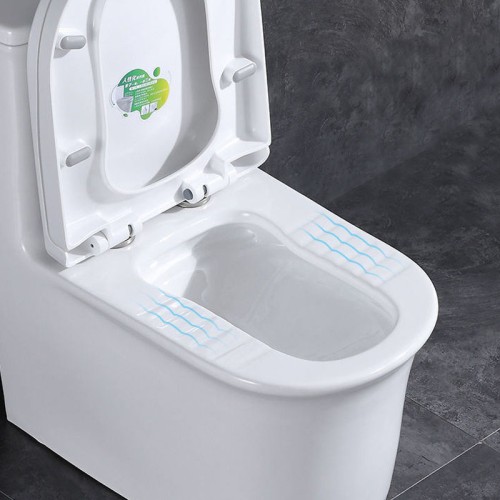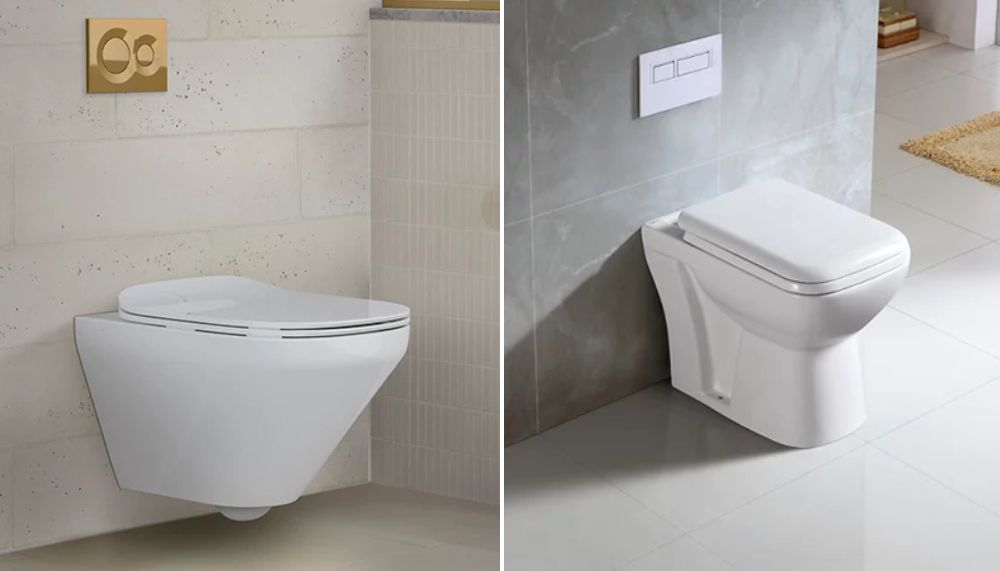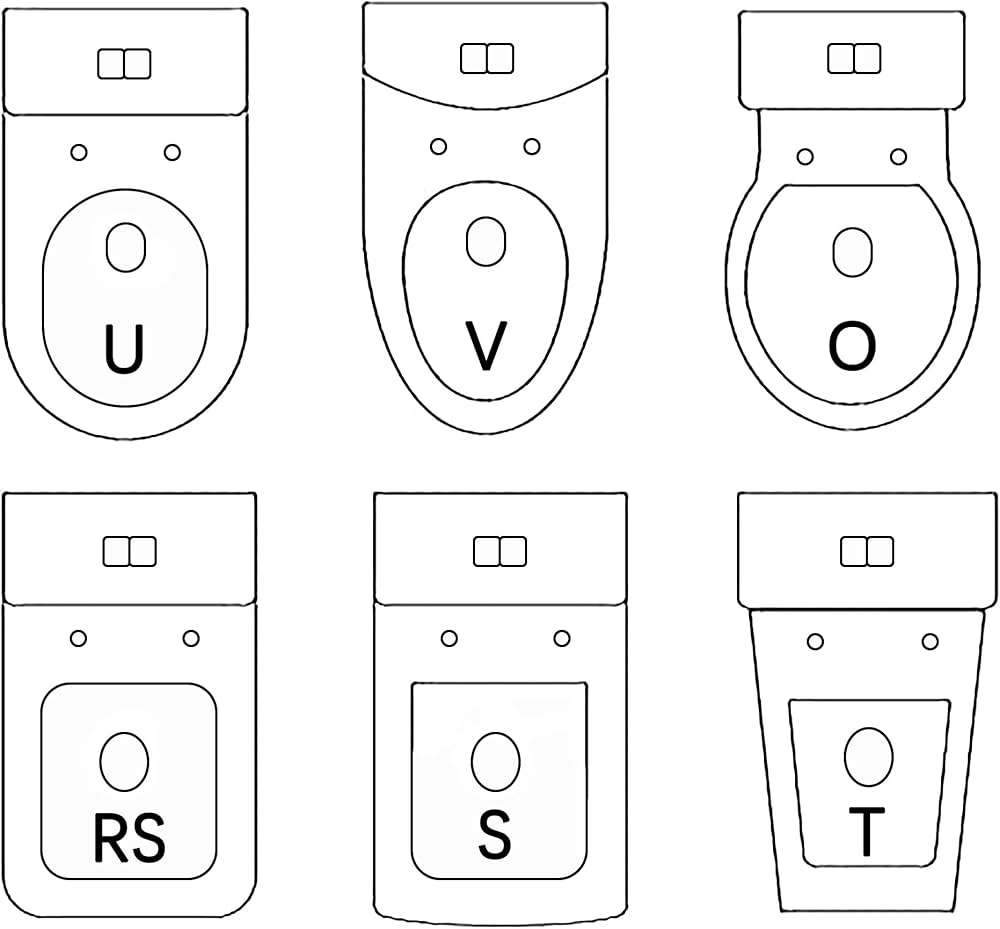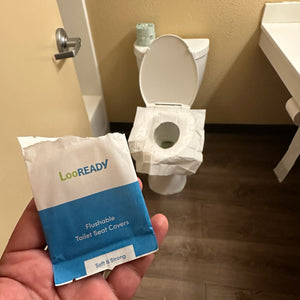Toilet seat size is a crucial factor often overlooked when purchasing a new seat. Choosing the right fit ensures comfort, functionality, and aesthetic harmony with your bathroom. With various sizes and shapes available on the market, it’s important to understand what works best for your toilet type and personal preferences. This guide will walk you through everything you need to know—from measuring techniques to material considerations—to help you find the perfect match.

Understanding Toilet Seat Sizes
Toilet seat size varies based on toilet shape, manufacturer, and design standard. While there are common dimensions, even a slight variation can result in discomfort or poor fitting. Seat sizes generally depend on three key measurements: length, width, and the distance between mounting holes. Knowing these helps you avoid returns or seat wobble. Choosing the right size not only ensures a better fit but also enhances hygiene, especially when paired with disposable seat covers.
Types of Toilet Seats Based on Shape
Toilet seats come in various shapes that cater to different toilet designs and user preferences. The most common shapes include round, elongated, hybrid, square, and D-shaped. Each has a specific comfort level and installation requirement. Selecting the right shape helps improve the overall bathroom experience and ensures that the seat aligns properly with the toilet bowl.
✅ Round Toilet Seats
 Round toilet seats are traditionally found in older homes or compact bathrooms. Their circular shape fits bowls with a shorter length—typically around 16.5 inches from the mounting holes to the front of the bowl. They're an excellent space-saving solution, ideal for smaller toilets where space is at a premium. Round seats are easy to find, budget-friendly, and compatible with many standard toilet models. They are also preferred in family bathrooms or children's restrooms because their size suits all ages. When selecting a round seat, always double-check the measurements to avoid overlap or gaps. These seats often offer a snug, cozy seating experience, although some users may find them less spacious than elongated versions.
Round toilet seats are traditionally found in older homes or compact bathrooms. Their circular shape fits bowls with a shorter length—typically around 16.5 inches from the mounting holes to the front of the bowl. They're an excellent space-saving solution, ideal for smaller toilets where space is at a premium. Round seats are easy to find, budget-friendly, and compatible with many standard toilet models. They are also preferred in family bathrooms or children's restrooms because their size suits all ages. When selecting a round seat, always double-check the measurements to avoid overlap or gaps. These seats often offer a snug, cozy seating experience, although some users may find them less spacious than elongated versions.
✅ Elongated Toilet Seats

✅ Hybrid Toilet Seats

Hybrid toilet seats blend the features of both round and elongated shapes. They are typically found in European and Asian toilet models or designer bathrooms. A hybrid seat usually features a softer curve than a traditional elongated seat, offering comfort without occupying as much space. These seats often fit non-standard bowls and are used when aesthetics, space, and functionality must coexist. Their versatile design makes them suitable for contemporary toilets and customized bathroom setups. However, due to their unique sizing, it’s essential to measure carefully before purchasing. Hybrid seats may also require custom fittings or mounting hardware, depending on the brand and model.
✅ Square and D-shaped Toilet Seats

How to measure a Toilet Seat Size?
Toilet seat size measurement starts with a few simple steps and basic tools. You’ll need a tape measure, a notepad, and possibly a ruler for accuracy. First, measure the distance between the mounting holes at the back of the bowl—usually 5.5 inches apart for most standard models. Then, measure the length from the center of the mounting holes to the front edge of the bowl. Finally, record the widest part of the bowl. These three dimensions will help you find the exact seat size you need.
Step-by-step guide:
-
Measure between the mounting holes
-
Measure the bowl’s length from the holes to the front edge
-
Measure the width at the broadest part
-
Note the bowl shape—round, elongated, square, etc.
Tools needed:
-
Measuring tape
-
Pencil or pen
-
Notepad
Common mistakes to avoid:
-
Guessing based on appearance
-
Measuring the seat instead of the bowl
-
Ignoring bowl shape or spacing between holes
Choosing the Right Toilet Seat for Your Toilet
Choosing the right seat means balancing size, shape, material, and design. Start by identifying the type of toilet you own—standard, compact, wall-mounted, or designer. Measure accurately and match those dimensions with the seat specifications. Then, consider comfort: do you prefer a soft-close lid or a heated seat? Finally, choose a color and material that fits your bathroom aesthetic. Don’t forget to check compatibility with hinges and mounting style. Comfort, hygiene, and ease of maintenance all play a part in choosing the ideal toilet seat.
Special considerations
When selecting a seat, factor in unique options such as bidet compatibility, soft-close mechanisms, and hygiene products like LooREADY disposable toilet seat covers. These covers are especially useful when sharing bathrooms or traveling. Bidet seats often require electric outlets and specific fittings. Soft-close lids enhance safety and noise control. If cleanliness is your top concern, pairing your toilet with disposable seat covers ensures an extra layer of protection in public or guest-use bathrooms. These added features not only increase functionality but elevate the entire bathroom experience.
Materials and Impact on Size & Comfort
Toilet seats come in plastic, wood, and cushioned varieties. Each material impacts the feel, durability, and fit of the seat. While size may remain standard, weight and flexibility can differ, affecting long-term comfort and functionality.
✅ Plastic vs. wood vs. cushioned toilet seats
Plastic toilet seats are lightweight, budget-friendly, and easy to clean—making them the most popular option. Wood seats, on the other hand, provide a warmer, more classic feel and greater durability, but may require more maintenance to avoid warping or chipping. Cushioned seats offer a plush feel, ideal for elderly users or those who seek added comfort. However, they may not last as long and can absorb moisture if not properly sealed. Choosing the right material often depends on personal comfort, climate, and bathroom style.
✅ Maintenance Tips Based on Materials
Maintaining your toilet seat depends heavily on the material. Plastic seats can be cleaned with antibacterial wipes or gentle cleaners. Avoid abrasive scrubs, which can cause scratches. Wood seats require a mild soap solution and should never be soaked, as they can absorb moisture and warp. Cushioned seats should be wiped down regularly and checked for wear and tear. Always tighten hinges periodically to prevent shifting or loosening. Routine cleaning not only keeps your bathroom hygienic but also extends the life of your toilet seat.
How material affects the fit and feel?
Material plays a subtle but important role in fit and comfort. Heavier materials like wood offer a sturdier, more premium seating experience but may not mold perfectly to all toilet bowl types. Plastic, being more flexible, usually conforms better to different shapes. Cushioned seats add padding but may alter your sitting position slightly. The material can also affect the seat’s response to temperature—plastic feels colder in winter, while wood retains heat better. Choosing the right material ensures optimal usability and satisfaction over time.
Toilet Seat Size Guide for Different Toilet Types
Toilet seat size varies widely across different toilet styles. Whether you're working with a standard, compact, or designer toilet, matching the correct seat is essential. Not all toilet seats fit all toilets, so understanding the differences in dimensions and compatibility is crucial for a secure fit.
✅ Standard toilets vs. compact toilets
 Standard toilets typically accommodate round or elongated seats with dimensions that fall within predictable ranges. Compact toilets, often found in powder rooms or RVs, may require specialty or custom-fit seats. These smaller models often use hybrid or slim-profile seats to maximize space. Always measure before purchasing, as compact toilets may have non-standard dimensions. When in doubt, consult the manufacturer or bring your old seat to match.
Standard toilets typically accommodate round or elongated seats with dimensions that fall within predictable ranges. Compact toilets, often found in powder rooms or RVs, may require specialty or custom-fit seats. These smaller models often use hybrid or slim-profile seats to maximize space. Always measure before purchasing, as compact toilets may have non-standard dimensions. When in doubt, consult the manufacturer or bring your old seat to match.
✅ Wall-mounted toilets vs. floor-mounted toilets
 Wall-mounted toilets tend to feature D-shaped or square bowls and require careful measurements to match the mounting and bowl design. Because the tank is hidden inside the wall, these toilets prioritize aesthetics and space-saving design. Floor-mounted toilets are more traditional, supporting a variety of seat shapes like round, elongated, and hybrid. Floor models offer more installation flexibility, while wall-mounted toilets demand precise alignment with specialized seats.
Wall-mounted toilets tend to feature D-shaped or square bowls and require careful measurements to match the mounting and bowl design. Because the tank is hidden inside the wall, these toilets prioritize aesthetics and space-saving design. Floor-mounted toilets are more traditional, supporting a variety of seat shapes like round, elongated, and hybrid. Floor models offer more installation flexibility, while wall-mounted toilets demand precise alignment with specialized seats.
✅ Commercial vs. residential toilet seat sizes
 Toilet seat size differs significantly between commercial and residential setups. Commercial toilets often use open-front seats for sanitation purposes and increased accessibility. These may come in elongated or standard forms but usually follow strict ADA and hygiene guidelines. Residential seats prioritize comfort and style, offering more variety in shapes and materials. Commercial seats are also more durable and resistant to vandalism, making them ideal for high-traffic areas.
Toilet seat size differs significantly between commercial and residential setups. Commercial toilets often use open-front seats for sanitation purposes and increased accessibility. These may come in elongated or standard forms but usually follow strict ADA and hygiene guidelines. Residential seats prioritize comfort and style, offering more variety in shapes and materials. Commercial seats are also more durable and resistant to vandalism, making them ideal for high-traffic areas.
Common Issues with Toilet Seat Sizing
One of the most common issues is purchasing a seat based on visual guesswork instead of actual measurement. This often results in gaps, overhangs, or wobbling. Another frequent mistake is ignoring the mounting hole spacing—some imported toilets use different standards than American models. Choosing a seat that doesn’t match your toilet’s shape can also cause discomfort. Additionally, users sometimes overlook how material, hardware, and added features like soft-close or bidet compatibility can affect fit. Even subtle differences in design can mean the seat won’t sit flush with the bowl. Always measure carefully, consider the shape and mounting type, and double-check compatibility with any extra features to avoid these common pitfalls.
Finding the Right Size Toilet Seat
Toilet seat size should always be determined by precise measurement and understanding of your toilet’s bowl shape and mounting configuration. Start by measuring the distance between the mounting holes and the length of the bowl. Note whether your toilet is round, elongated, or a more modern shape like D or square. Use these details to find seats labeled with corresponding dimensions. Don’t rely on a “universal fit” label—these can still vary across brands. If your toilet is uniquely shaped or wall-mounted, consider contacting the manufacturer for recommendations. Also, keep in mind if you’re opting for added features like bidets, heated seats, or soft-close lids, as they may require more clearance or specific fittings. With accurate info and a few minutes of measuring, you can find a seat that’s a perfect fit.
Conclusion
Understanding toilet seat size helps you avoid the hassle of returns, misfits, and discomfort. From traditional round to elongated, hybrid, and modern D-shaped options, the right seat enhances comfort and hygiene. Measuring accurately, considering toilet type, and factoring in material and design preferences are key steps in making the right choice. Don't overlook special features like soft-close lids or bidet attachments. And for public or shared toilets, LooREADY’s disposable seat covers offer an extra layer of sanitary assurance. Whether upgrading your home or replacing a worn-out seat, a well-sized toilet seat is a small investment that makes a big difference in daily comfort and cleanliness.

